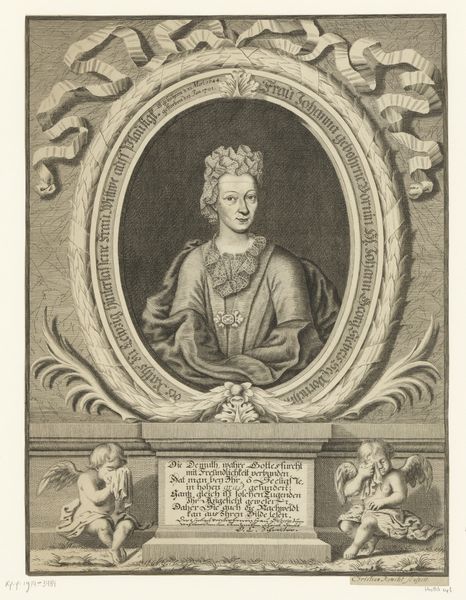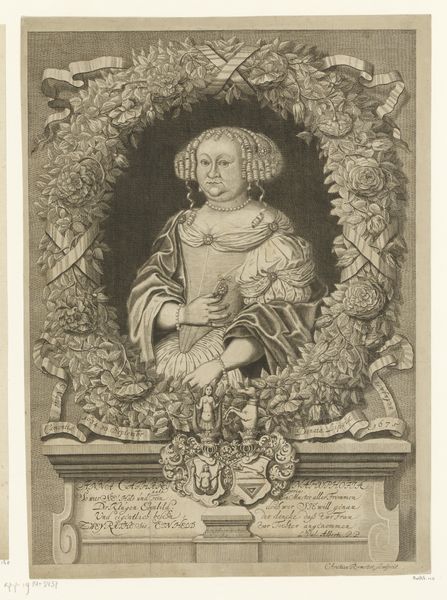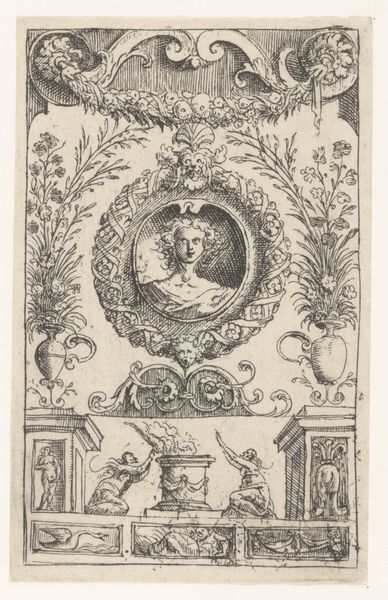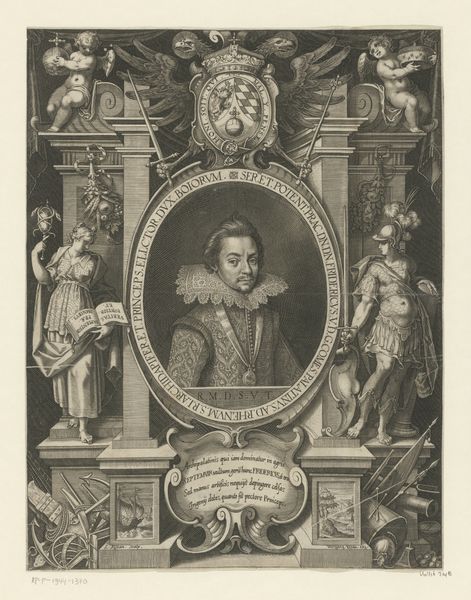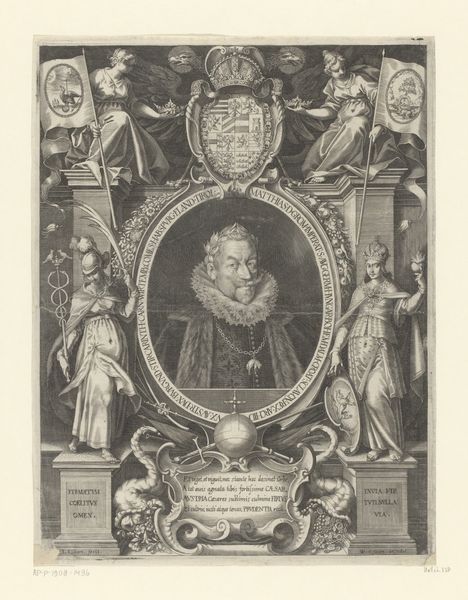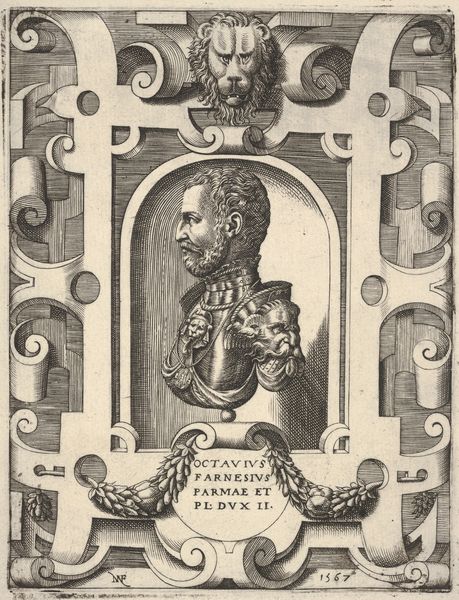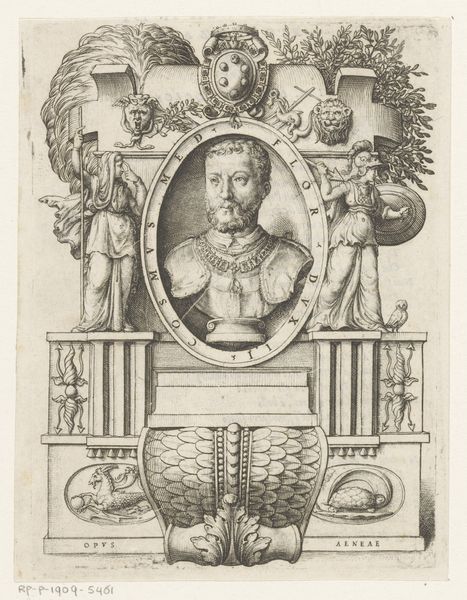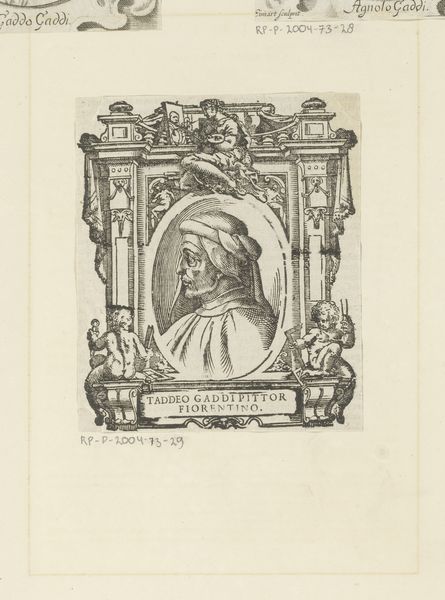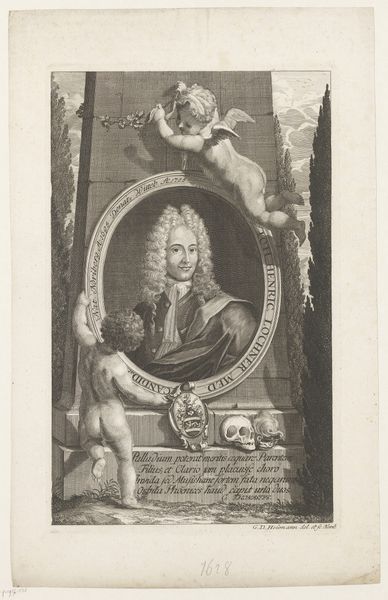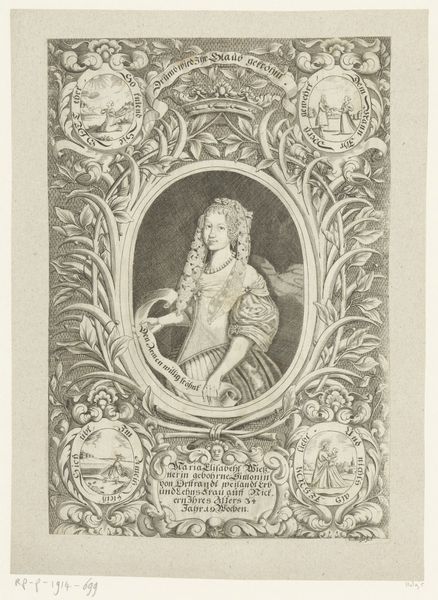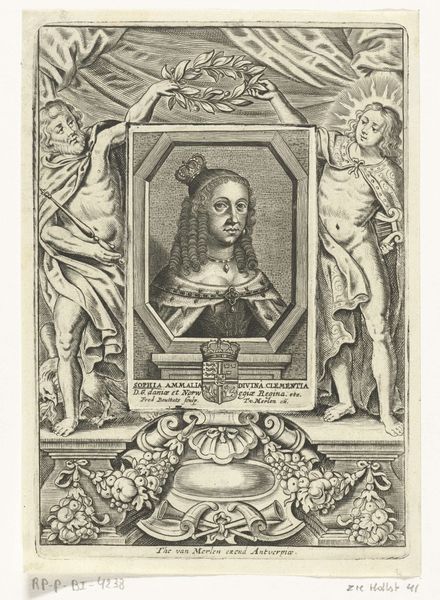
drawing, print, paper, ink, pen, engraving
#
portrait
#
drawing
#
byzantine-art
# print
#
paper
#
ink
#
line
#
pen
#
history-painting
#
engraving
Dimensions: 283 × 216 mm
Copyright: Public Domain
Editor: Here we have an intriguing portrait, "Bust Portrait of Carmelite Monk in Niche" by Johannes Lanoy, created using pen, ink and engraving on paper. The exact date is unknown, and it’s currently held at the Art Institute of Chicago. The subject's direct gaze and the surrounding ornamentation strike me as both pious and self-important. How do you interpret this work? Curator: It's fascinating how artistic representation intertwines with social power, isn't it? This portrait, while seemingly a personal depiction, is deeply embedded in the institutional history of the Carmelite order. Note how the monk is framed within an elaborate architectural niche, inscribed with Latin phrases. How do these textual and visual elements function in constructing the monk's identity and the order's authority? Editor: The Latin phrases definitely suggest authority, like mottos or decrees, further enhanced by the niche making him resemble a saintly statue. Curator: Precisely. And observe the dragons intertwined within the niche's structure. Dragons could signify many things from evil and temptation to wisdom and guardianship. Which associations might the Carmelites wish to emphasize, and how does that impact the perception of the monk's role within the institution and within the broader public sphere? The art becomes an exercise in religious propaganda. Editor: So, the dragons aren't merely decorative, but symbolic elements actively shaping the message, not just about the monk but about the entire order? Curator: Exactly. It showcases the sophisticated methods religious orders used to promote themselves through carefully constructed visual narratives, controlling their image and thereby wielding influence. Editor: That makes me think about how religious figures are represented today in very different contexts and ways. Thank you, I see this piece with entirely new eyes. Curator: It has been a learning opportunity for me as well; every close examination prompts fresh thoughts about how socio-political entities utilize imagery to solidify their positions.
Comments
No comments
Be the first to comment and join the conversation on the ultimate creative platform.
